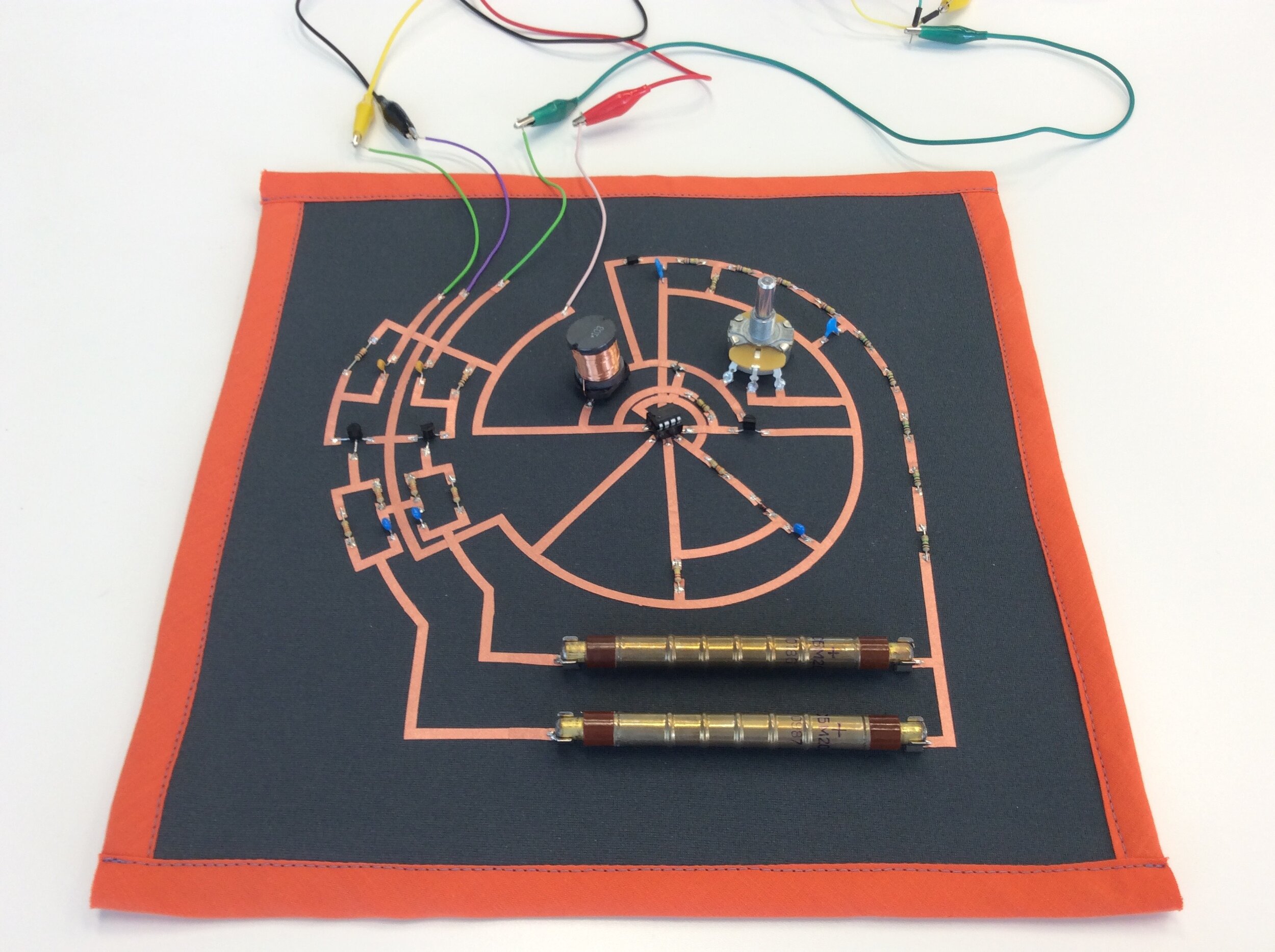Cosmic Bitcasting
Cosmic Bitcasting is a collaboration between Afroditi Psarra and experimental physicist Cécile Lapoire on creating a wearable cosmic ray detector. The project was developed during a one-month residency at ETOPIA Center for Art and Science in Zaragoza, in the context of the exhibition REVERBERADAS.
Conceptual Axis
According to Nicholas Negroponte in his 1995 book “Being Digital”, the fundamental difference between the digital and the physical realm is that the former is composed of bits and the latter of atoms. In the information highway, the data we collect from the world of atoms takes the form of bits, and the fundamental characteristic of these bits is that they can be manipulated and expressed in a multitude of forms.
In our era of continuous technologic and scientific discoveries, where space probes are scouting the galaxy for Earth-like planets and huge particle accelerators are simulating the birth of our universe, these bits of “cosmic” data are extremely important in order for humankind to grasp the invisible world that surrounds us in its everyday existence.
Cosmic Bitcasting emerges from the idea of connecting the human body with the cosmos by creating a wearable with embedded actuators (light, sound, and vibration) that will provide sensory information on the invisible cosmic radiation that surrounds us. The project proposes the creation of an open-source, wearable detector, that will detect secondary muons generated by cosmic rays hitting the Earth’s atmosphere that pass through the human body.
The aim of this project is to create a hand-crafted technological artifact intersecting science and art, that could potentially create future mythologies/methodologies and will provide a fertile field of experimentation with DIY (Do It Yourself) and DIWO (Do It With Others) practices of particle physics. Furthermore, the idea of this project is to create an open-source garment, that can be fabricated by anyone and thus contribute to the creation of an array of wearable detectors that will generate useful cosmic radiation data.
The project is open to many types of outcomes since depending on the volume and safety measures of the actual detector it could translate in an audiovisual performance piece, in a hybrid object that combines the physical and digital realm, and in an artistic manual for DIY scientific research. The intention of the piece is to engage the public to experience the invisible cosmic radiation landscape and to create an archive of cosmic data that could contribute to the further research of the phenomenon of cosmic rays.
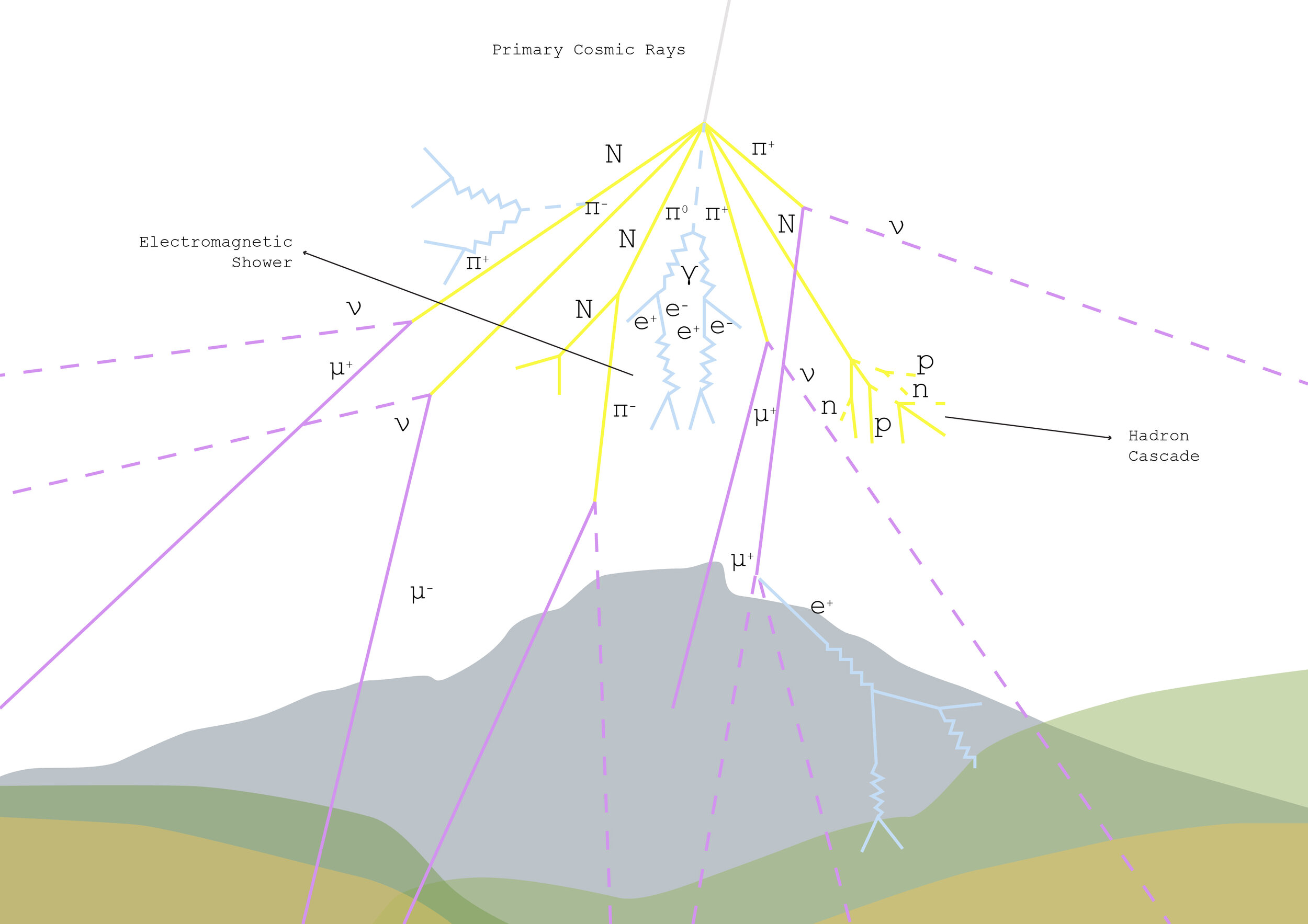
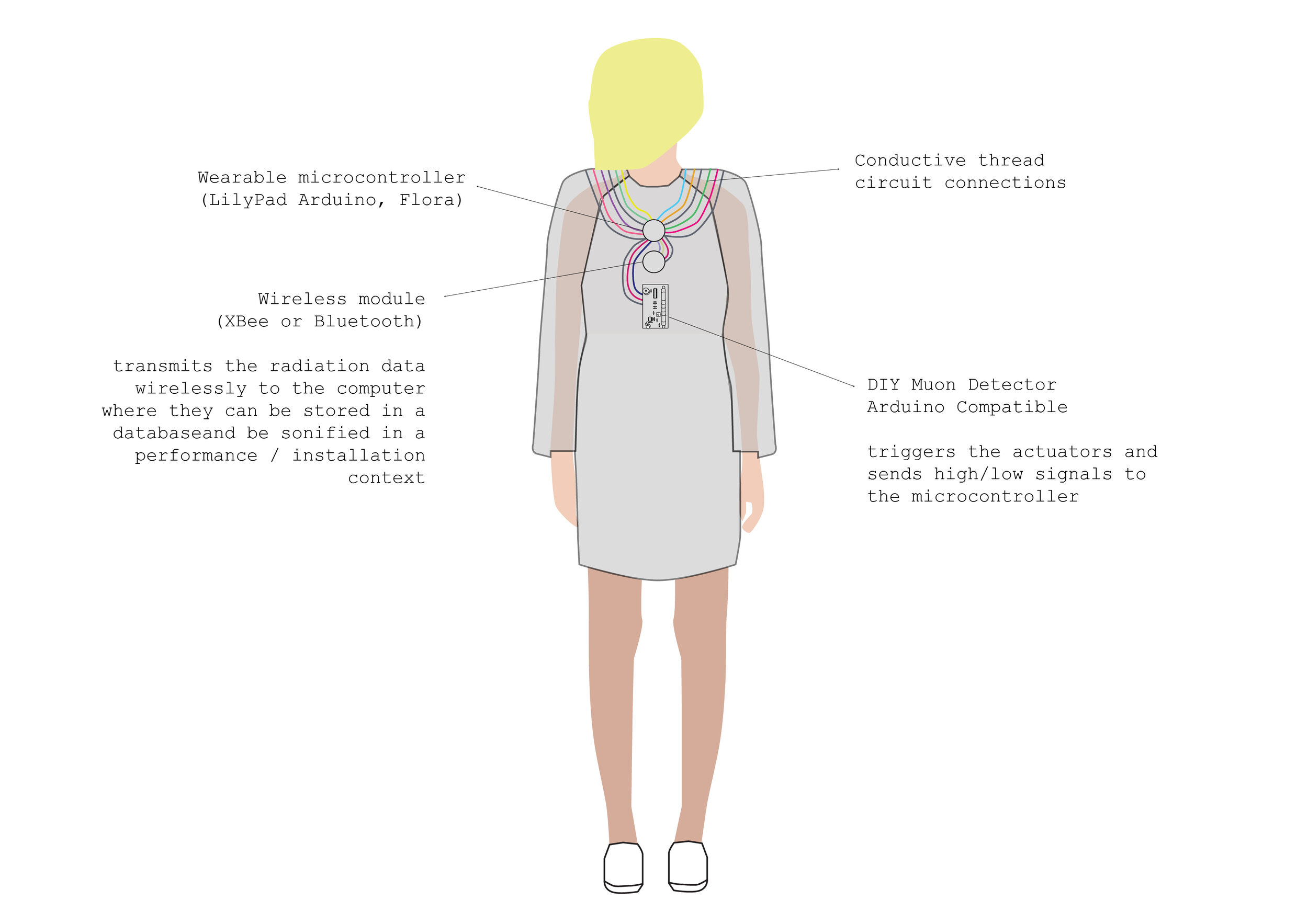
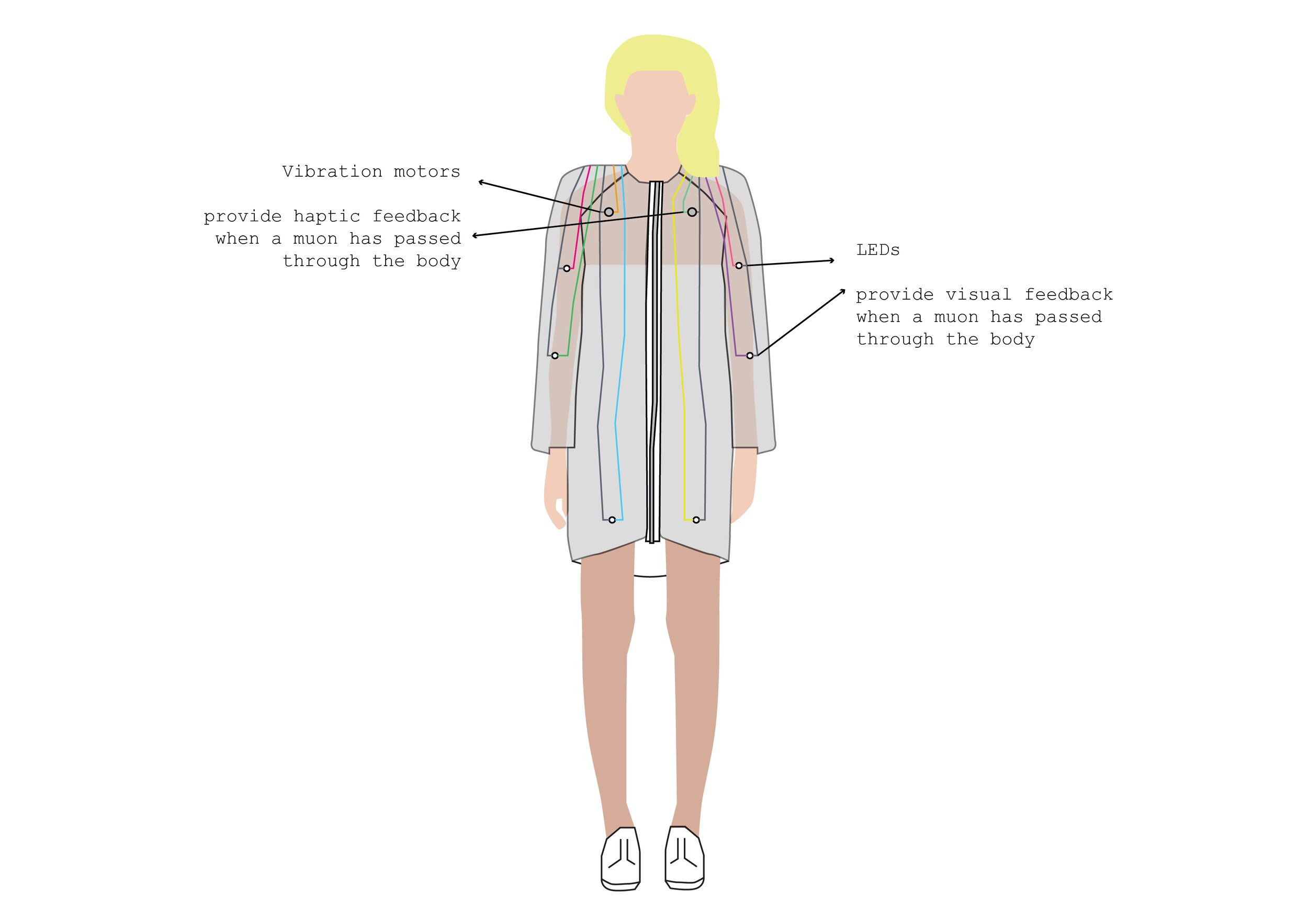
Etopia residency documentation
Before starting the residency we dedicated a long period of time in researching other projects (artistic and scientific) that deal with the idea of detecting cosmic rays using DIY detectors. Here is a list of projects and scientific papers that influenced our approach:
Geiger-Müller Tubes
http://hardhack.org.au/
http://www.ergotelescope.org/
http://cosmicpi.org/
http://www.instructables.com/id/Networked-Cosmic-Ray-Detector-Feel-Radiation-on-yo/
Scintillating Fibers
http://www.tandfonline.com/doi/abs/10.1080/00223131.2004.10875724
http://arxiv.org/pdf/physics/0501141.pdf
http://www.autexrj.com/cms/zalaczone_pliki/0314.pdf
Week I
During the first week of the residency we experimented with textile materials and worked with two Arduino compatible DIY radiation detector kits using GM tubes:
http://brohogan.blogspot.com.es/search/label/Geiger%20Counter
http://www.rhelectronics.net/store/radiation-detector-geiger-counter-diy-kit-second-edition.html
Based on these DIY geiger counters, as well as the open-source project of Juliana Cherston - a student at the MIT Medialab we designed our circuit schematic and fabricated the first prototype of the detector on neoprene fabric using wires and the couch stitching technique.
Week II
The second week at Etopia was dedicated to testing the first prototype and designing the wearable interface. During our tests with the oscilloscope, we observed a sudden cut in the HV (high voltage) boost converter part of our circuit that was probably due to some of the components failing as we had replaced three 2N3904 transistors with another NPN general-purpose low-power amplifying transistors that could not convert our 3.3V input into the required 400-500V for the GM tubes to work.
Because the space that we were working didn't have the necessary safety measures in order to work with high voltage we decided to use a Geiger Counter kits for the garment itself. So we focused on creating the wearable circuit and designing the interactions. For our wearable circuit we used a Lilypad Arduino 328 microcontroller, High Flex 3981 7x1 Copper bare conductive thread from Karl Grimm, Pure Copper Polyester Taffeta Fabric by Less EMF, white SMD LEDs, a coin cell vibration motor and an IRL3103 MOSFET with a 100 Ohm resistor to drive the motor.
Cosmic radiation schematic
Afroditi and Cecile at Etopia testing the first e-textile prototype with the oscilloscope
Week III
On the third week of the residency, we redesigned our open-source cosmic ray detector and created a second prototype using neoprene as the base and the copper conductive fabric (with heat bonded adhesive) for the circuit traces which we cut using a vinyl cutter. After cutting we ironed the traces on the neoprene and we soldered all the components (this time having all the correct transistors). After testing it a couple of times and tweaking the pot that controls the voltage that is sent to the GM tubes we managed to have our detector working. In this case, the detector works exactly as the Geiger Counter kits with the difference that now we are using two tubes (connected to D2 and D3 at the Arduino board).
E-textile muon detector
When printing the values if we manage to get "a synchronized hit" between the two tubes, we have a 75% probability of having detected a muon (secondary particle produced by the collision of cosmic rays with the Earth's atmosphere). It is important to point out that we did not manage to get a synchronized hit during our tests, but also the detector is designed to be mounted on the back of a garment, and having the GM tubes on top of the other would make it more likely to have a synchronized hit.
Week IV
On the last week of the residency, we made a new addition to the wearable - we incorporated an XBee Series 2 antenna in order to be able to capture the detection data and save them locally to a computer in Etopia so that at the end of the Reverberadas exhibition - on September 2016 to upload them on a database, accessible by anyone interested in using them for research purposes, visualization or sonification.
Towards the end of the residency we had the opportunity to do some photo and video documentation through the lens of the very talented filmmaker Despina Economopoulou.
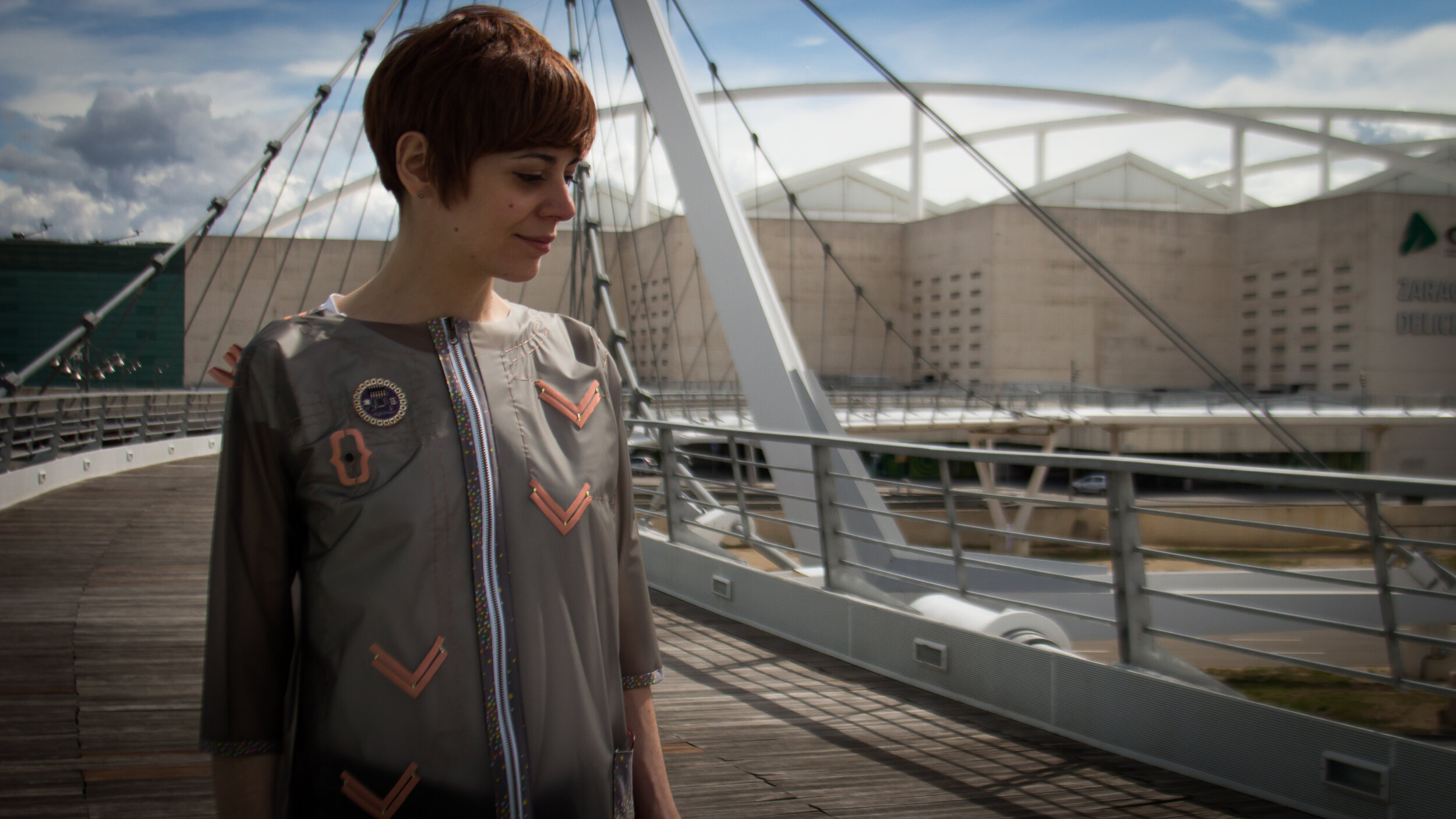

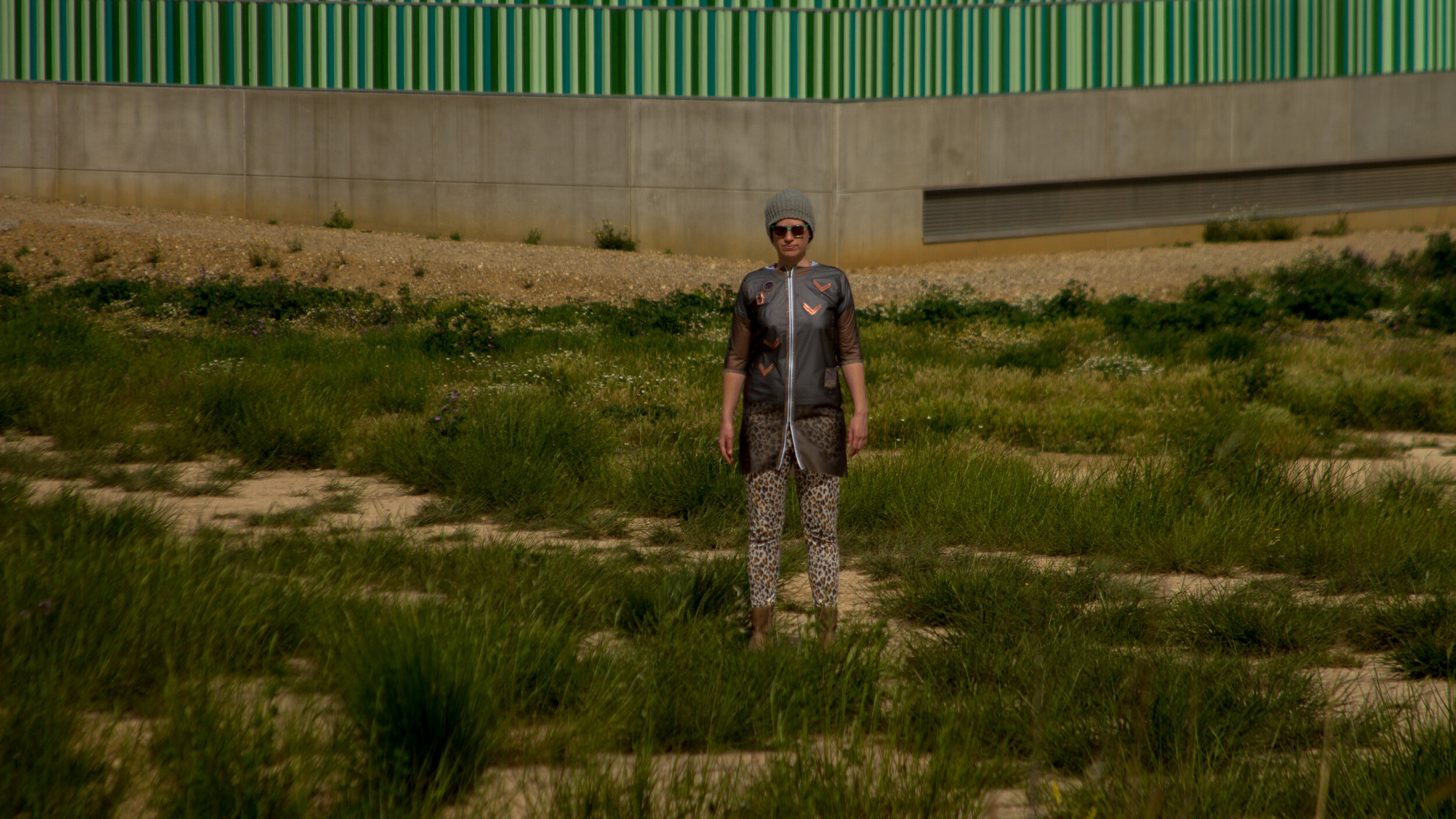

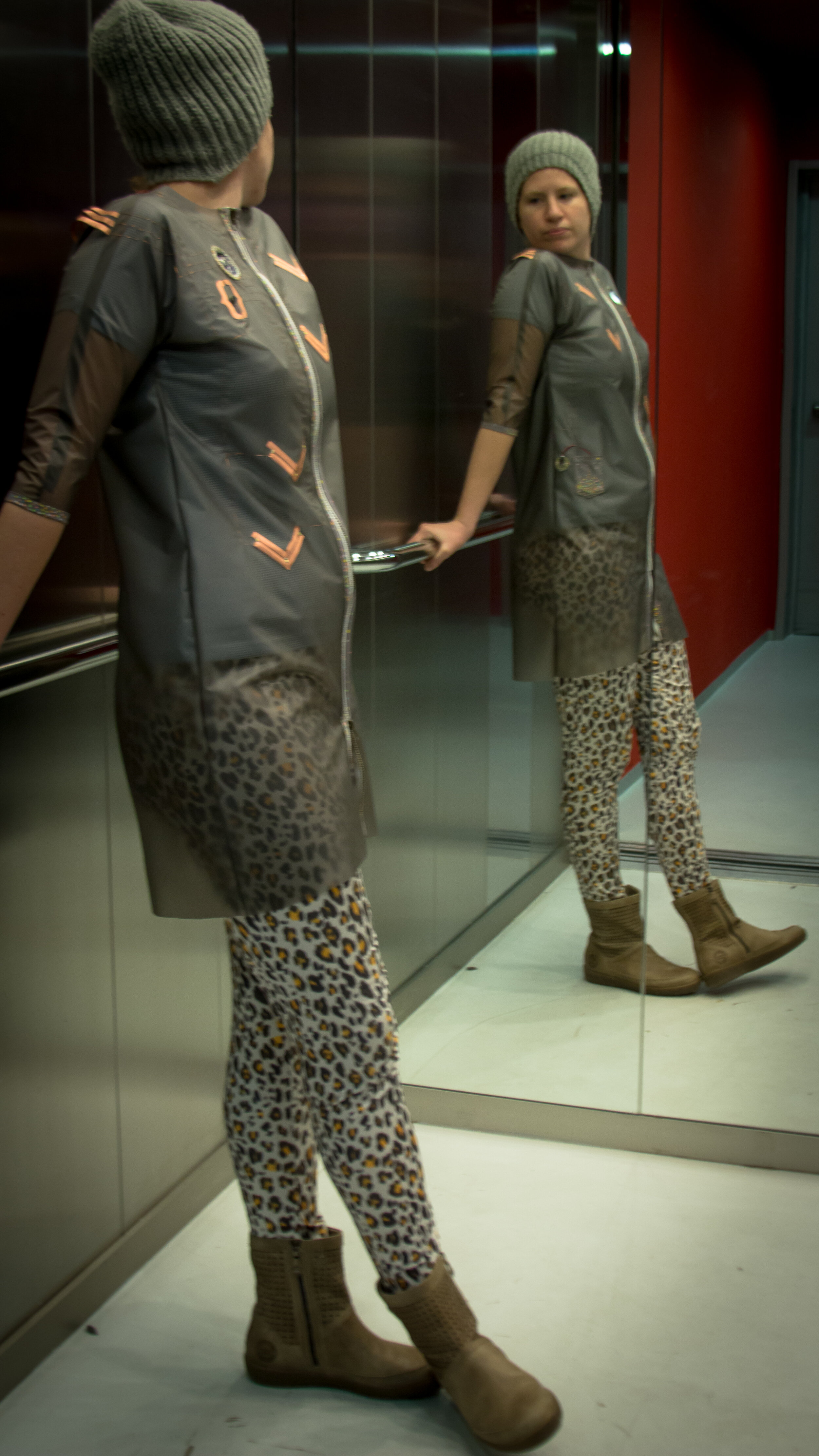
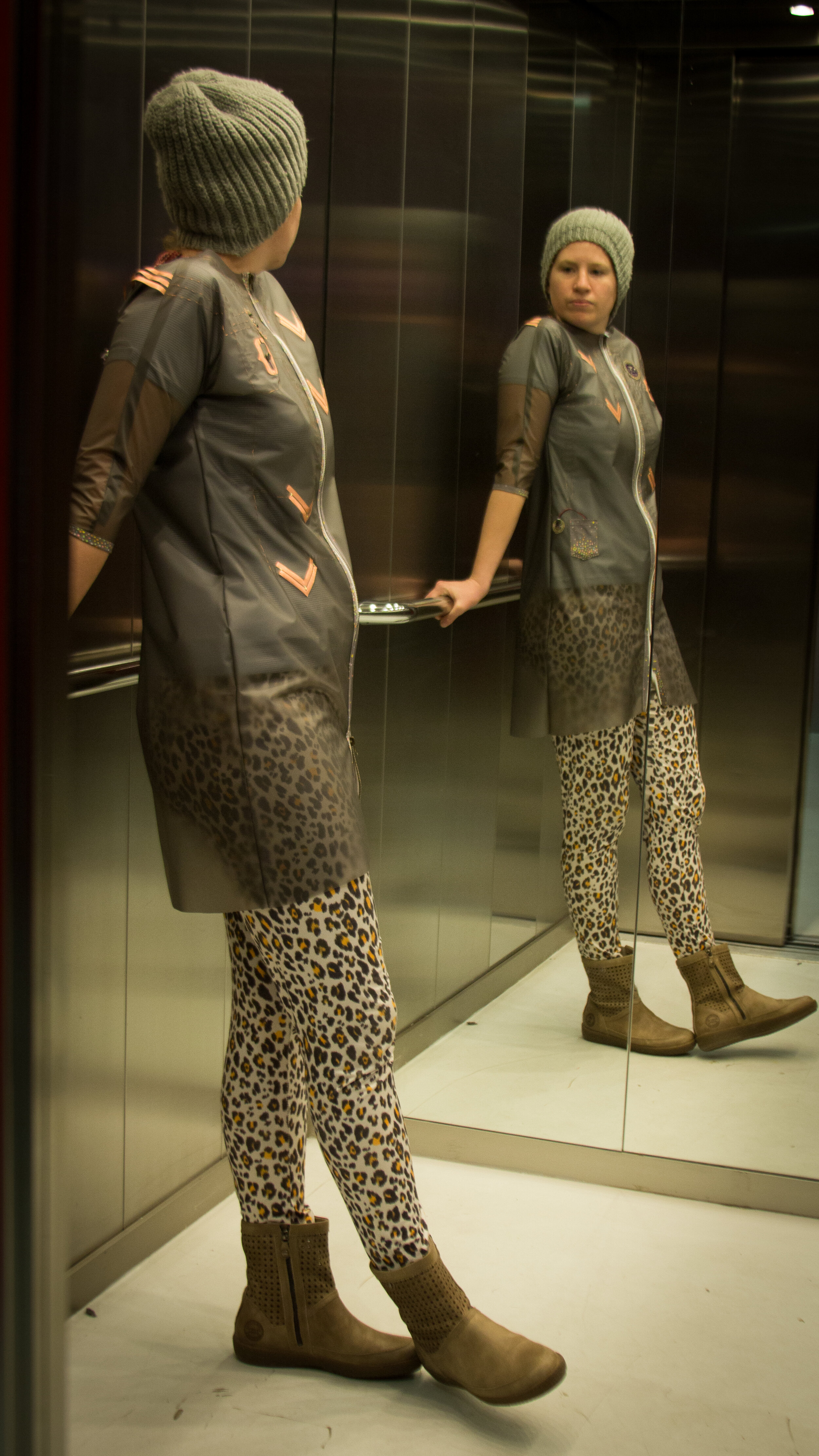
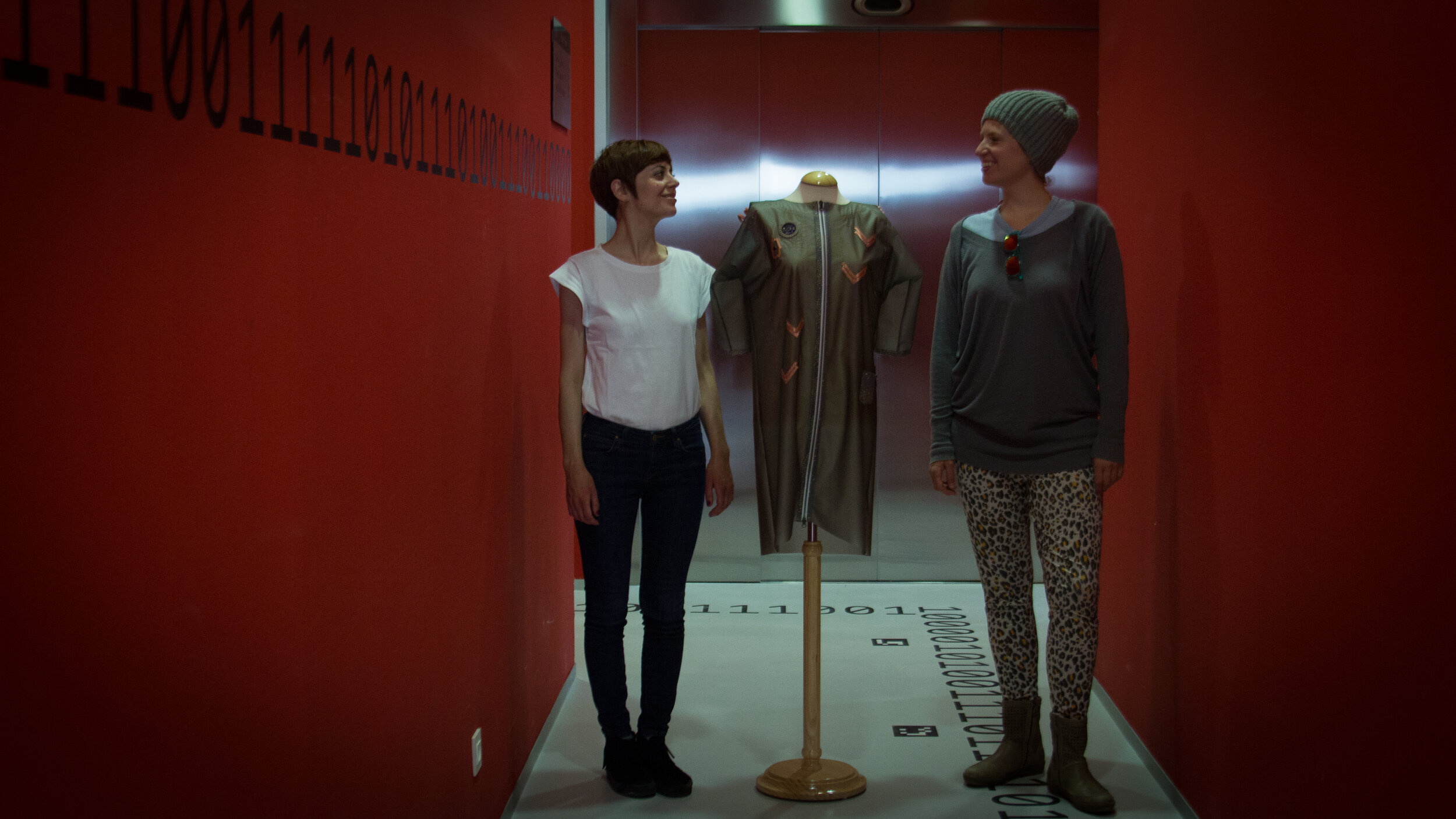
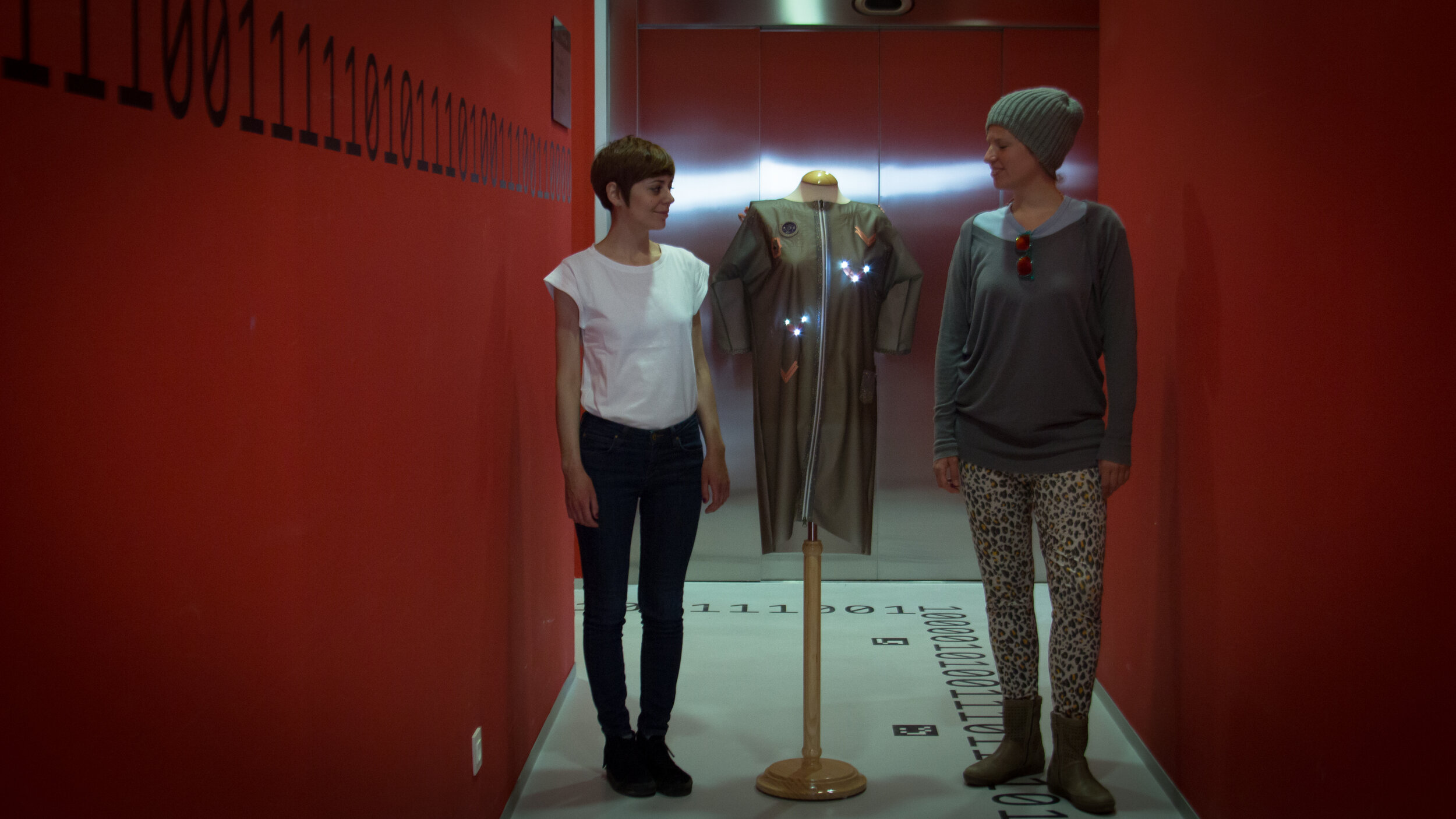

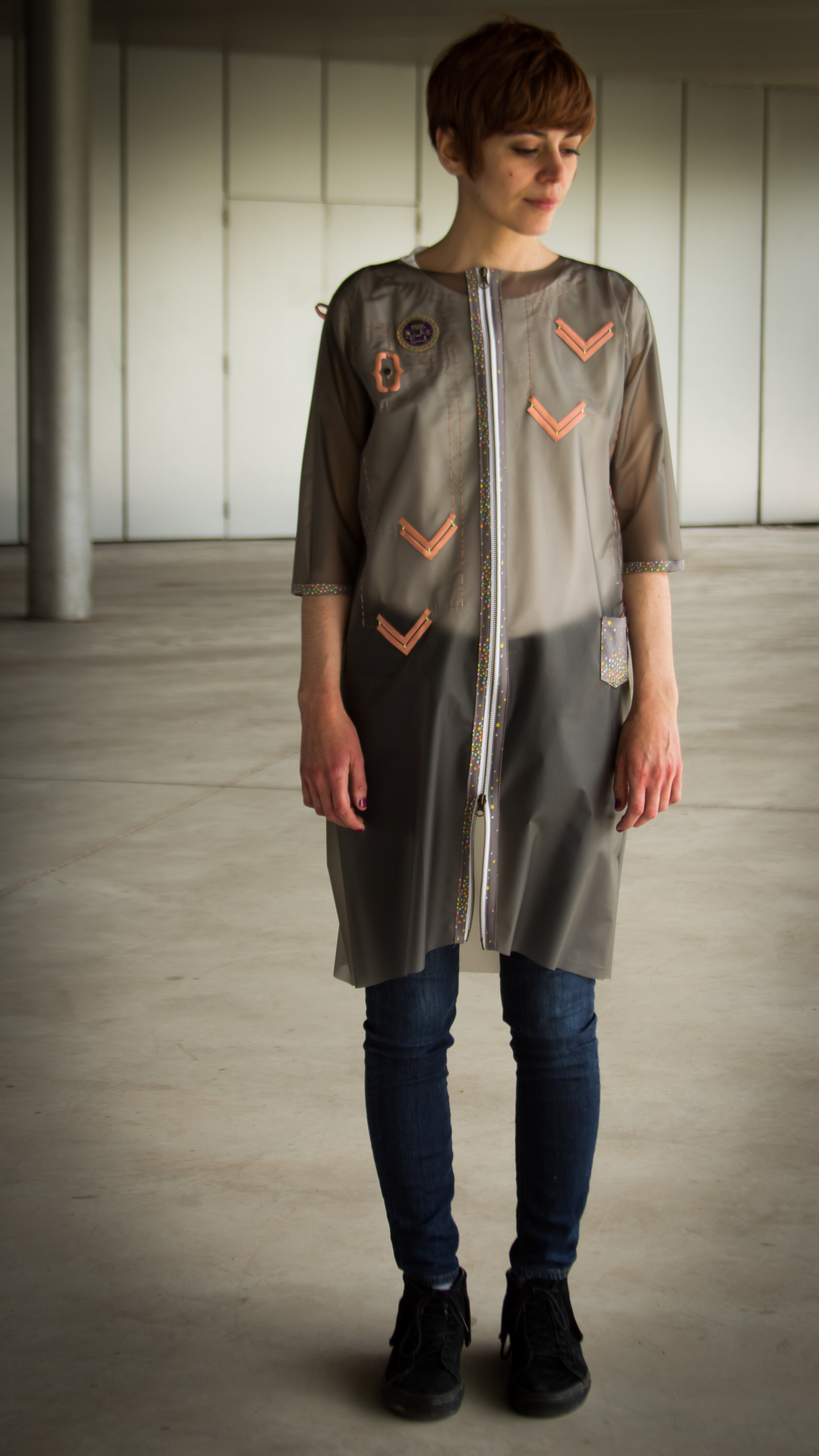
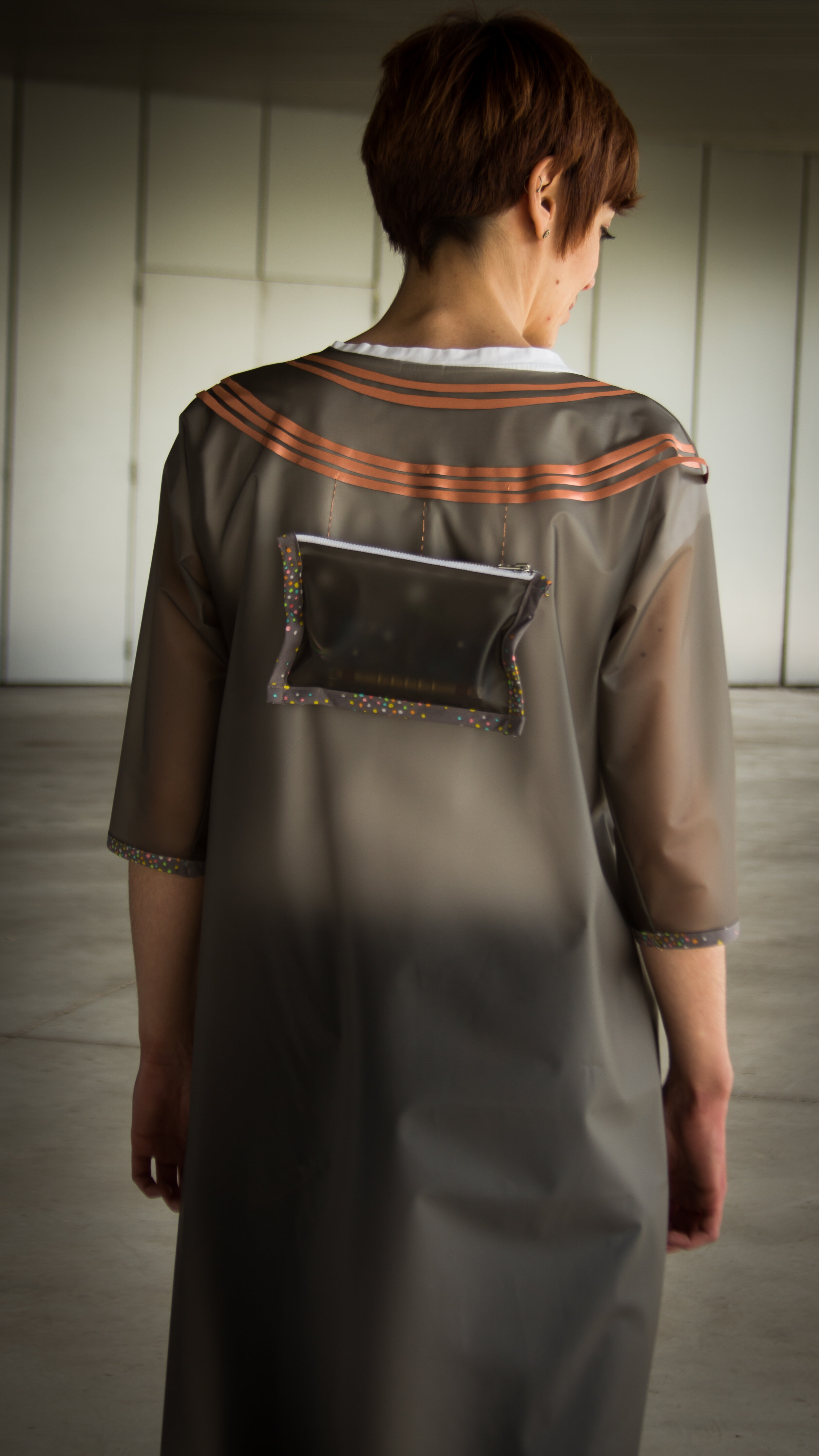
Exhibitions
2017
ISWC Design Exhibition The 21st International Symposium on Wearable Computers Maui, Hawaii, USA. Chaired by Galina Mihaleva.
Alchemists of Art and Science, Ars Electronica Center Linz, Austria. Curated by Kristina Maurer.
2016
Human Factor - Endless Prototyping, organized by Ars Electronica at DRIVE - Volkswagen Group Forum in Berlin, Germany. Curated by Martin Honzik.
Reverberadas Etopia - Center for Art and Technology in Zaragoza, Spain. Curated by Fermín Serrano and organized as part of the European Digital Art and Science Network.
Publications
Psarra, Afroditi & Lapoire, Cecile. 2017. Cosmic Bitcasting. In Proceedings of the 2017 ACM International Symposium on Wearable Computers (ISWC '17). Association for Computing Machinery, New York, NY, USA, 227–231. DOI: https://doi.org/10.1145/3123021.3123071
Citations
Stocker, Gerfried & Hirsch, Andreas. 2017. The Practice of Art & Science. The European Digital Art and Science Network. Ars Electronica Center Linz. ISBN 978-3-7757-4341-9
Leopoldseder, Hannes & Schöpf, Christine & Stocker, Gerfried. 2016. RADICAL ATOMS and the alchemists of our time. Ars Electronica 2016 catalogue. Ars Electronica Center Linz. ISBN 978-3-7757-4193-4
Awards and Residencies
2016
Winner of the European Art and Science Network Residency program at Etopia - Center for Art and Technology, Zaragoza for the project Cosmic Bitcasting.
Press
“Afroditi Psarra - The Academic of Art with the Scientific Vision.” Ellines.com, ellines.com, 9 Aug. 2020, www.ellines.com/en/achievements/44402-the-academic-of-art-with-the-scientific-vision/
“Cosmic Bitcasting De Afroditi Psarra.” Futuridad, 4 Aug. 2019, futuridad.com/cosmic-bitcasting-de-afroditi-psarra/
Prakash, Vikram. “23: Wearable Technology, Critical Thinking and Our Digital Future with Afroditi Psarra.” ARCHITECTURE TALK, ARCHITECTURE TALK, 21 June 2018, www.architecturetalk.org/home/23
Fontana, Federica. “Sensing the Invisible. Interview with Afroditi Psarra. Digicult: Digital Art, Design and Culture.” Digicult, Digicult, 7 Apr. 2018, digicult.it/design/sensing-invisible-interview-afroditi-psarra/
“Cosmic Bitcasting Is a Wearable Radiation Detector.” Arduino Blog, 23 June 2016, blog.arduino.cc/2016/06/23/cosmic-bitcasting-is-a-wearable-radiation-detector/
Chardronnet, Ewen. “The Interactive Garment That Connects You to the Cosmos.” Makery, Makery, 24 May 2016, www.makery.info/en/2016/05/24/le-vetement-interactif-qui-vous-connecte-au-cosmos/


